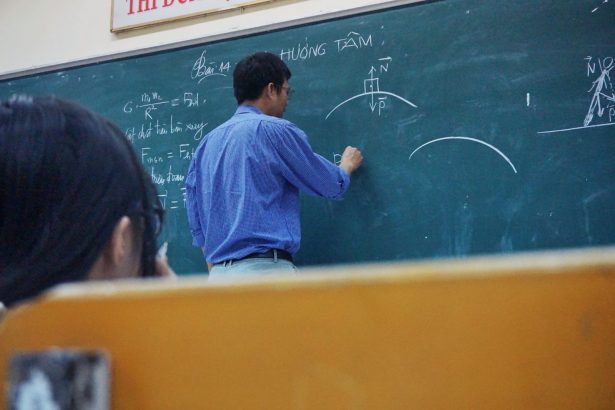Children’s cognitive development
Written by Gabriella Philippou, Psychotherapist-Counsellor, Focusing Experiential Therapist, Trainer Coach
Piaget’s Theory of Cognitive Development aims at explaining how a child constructs a mental model of the world. Piaget’s work supports that Cognitive Development is a process which occurs due to biological maturation and interaction with the environment. He also showed that young children think in strikingly different ways compared to adults.
His contributions to humanity include a stage theory of child cognitive development, detailed observational studies of cognition in children as well as a series of simple but ingenious tests to reveal different cognitive abilities.
Piaget’s Theory of Cognitive Development
Piaget’s four main stages of cognitive development are:
(a) The sensori-motor stage (from birth to 2 years);
(b) The pre-operational stage (from 2 up to 6 years);
(c) The concrete operational stage (from about 6 to 12 years); and
(d) The formal operational (from the age of 12 years onwards)
The sensori-motor stage is divided into six sub-stages which cover from birth to about two years. During this period the child’s development is concerned with mastering the interactions of information from the senses and from motor actions in relation to the physical world. Learning at this stage is concerned with solving physical problems. The sensori-motor stage concludes with the emergence of symbolic function: the ability to represent schemas which begins to free the child from a total involvement in action. A schema is an organized sequence of behaviour. Simple examples include sucking and grasping whilst a more complex example includes the putting on of a pair of socks.
The second stage is the Pre-operational stage which commences at approximately the age of two and ends at around the age of six. It is first detectable with the establishment of object permanence and ends with the emergence of “Concrete Operations”. With regards to object permanence, the child becomes aware that a physical object is permanent and that it continues to exist even when the child no longer interacts with it. During this stage, the child is characterized largely by dependence upon perceptual features of the world and thinking by intuitive in nature rather than logical. Although, the child is capable of some early forms of symbolic representational thought e.g. during play, the crib for the child’s doll may be represented through the usage of a box. The pre-operational child also lacks an understanding of underlying constancies in the world: for instance, when a piece of clay is rolled out, the child is unable to comprehend that, even though its appearance is different, the amount of clay is exactly the same.
The third stage is the Concrete Operational which starts from about six and ends at around 12 years. It begins with the establishment of conservation and ends at around twelve with the beginning of the abstract thinking which marks the formal operational period. The “conserver” child understands that the quantity is preserved no matter what transformations are applied so long as nothing is added and nothing is taken away. However, it appears that various applications of this principle by the child require different amounts of experience i.e. the conservation of number is observed before conservation of length, and weight and volume appear later still.
The fourth stage is the Formal Operational (from the age of 12 onwards) and is regarded as the culmination of “intellectual” development. It involves abstract thinking which is no longer tied to physical objects and events. It is propositional in nature and is concerned with the hypothetical and possible rather than the real and the perceived.
Piaget also introduced the term egocentrism which is experienced by the child while in the pre-operational stage (2-6 years old approximately). As the roots of the term suggest, the perspective in which one is preoccupied with the self and relatively insensitive to others. It pertains to speech and thought dominated by the child’s own internal cognitions. The child lacks the ability to reflect on operations, his or her understanding of the world tends to focus on states rather than on transformations. Egocentrism means, amongst other things, that the child is animistic, projecting thoughts, intentions and feelings onto inanimate objects for example:
Cli (3.9) speaking to a motor in a garage: “The motor has gone to bye-byes. It doesn’t go out because of the rain.”
Nel (2.9) seeing a hollow chestnut tree: “Didn’t it cry when the hole was made? To a stone: “Don’t touch my garden!…. My garden would cry.”
This pre-operational, egocentric child is unable to comprehend points of view different from his or her own. The child is unable to recognize that a three-dimensional scene has several view points apart from his or her own. In the “Tree mountains task” carried out by Piaget, the child nurtured the impression that his own view of the mountains and the other landmarks mentioned e.g. cross, small house, zig-zag paths, was also the view that the doll had.
Furthermore, egocentrism prevents the possibility of true interaction in play which is attributed to the fact that the child is unable to take into consideration the thoughts and feelings of other children. Piaget’s confirmation that children of this age, even when playing together in groups, are really playing in parallel is strongly supported by a series of observations made at the Maison des Petits de L’Institut Rousseau.
Here is a very interesting extract from these series of observations.
“Pie (to Ez who is drawing a tram-car with carriages in tow): But the trams that are hooked on behind don’t have any flags. (No answer.)
(Talking about his tram). They don’t have any carriages hooked on ….(He was addressing no one in particular. No one answers him.)
(To Be’a), “T” sa tram that hasn’t got no carriages. (No answer.)
(To Hei), This tram hasn’t got no carriages. Hei, look, it isn’t read, d’you see… (No answer.)
(Lev says out loud, “A funny gentleman’ from a certain distance, and without addressing himself to Pie or to anyone else). Pie: A funny gentleman! (Goes on drawing his tram.)
I’m leaving the tram white.
(Ez who is drawing next to him says, “I’m doing it yellow’). No, you mustn’t do it all yellow.
I’m doing the stair-case, look (Bea answers, ‘I can’t come this afternoon. I’ve got a Eurhythmic class.’)
What did you say? (Bea repeats the same sentence.)
What did you say? (Bea does not answer. She has forgotten what she said, and gives Ro a push.)
(To Bea). Leave him alone.
(Mlle B, asks Ez if he would like to come with her). Come here Ez, it isn’t finished …. Please teacher, Ez hasn’t finished.
(Without addressing himself to anyone.) I’m doing some black stones ….
(Id), Pretty …. these stones.
(To Ez). Better than you, eh? (No answer. Ez had not heard the previous remark.)
(Piaget, 1959, pp. 6-7)
Written by Gabriella Philippou, Psychotherapist-Counsellor, Focusing Experiential Therapist, Trainer, Coach




